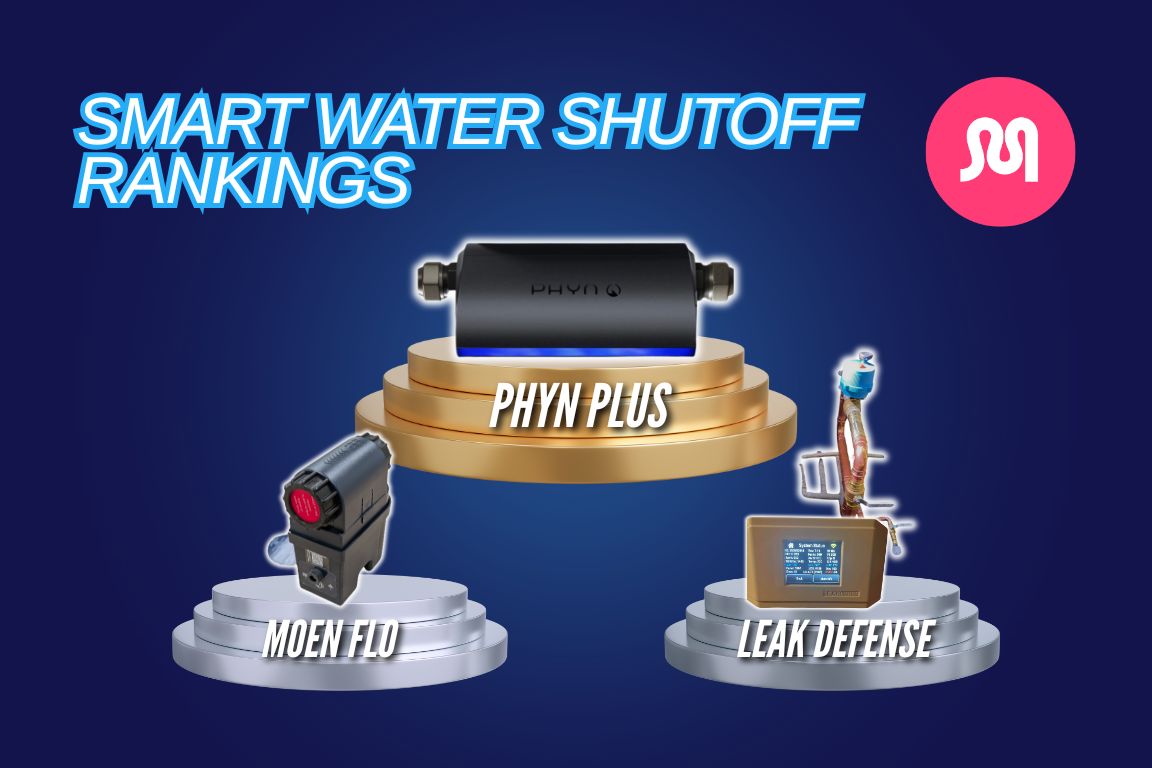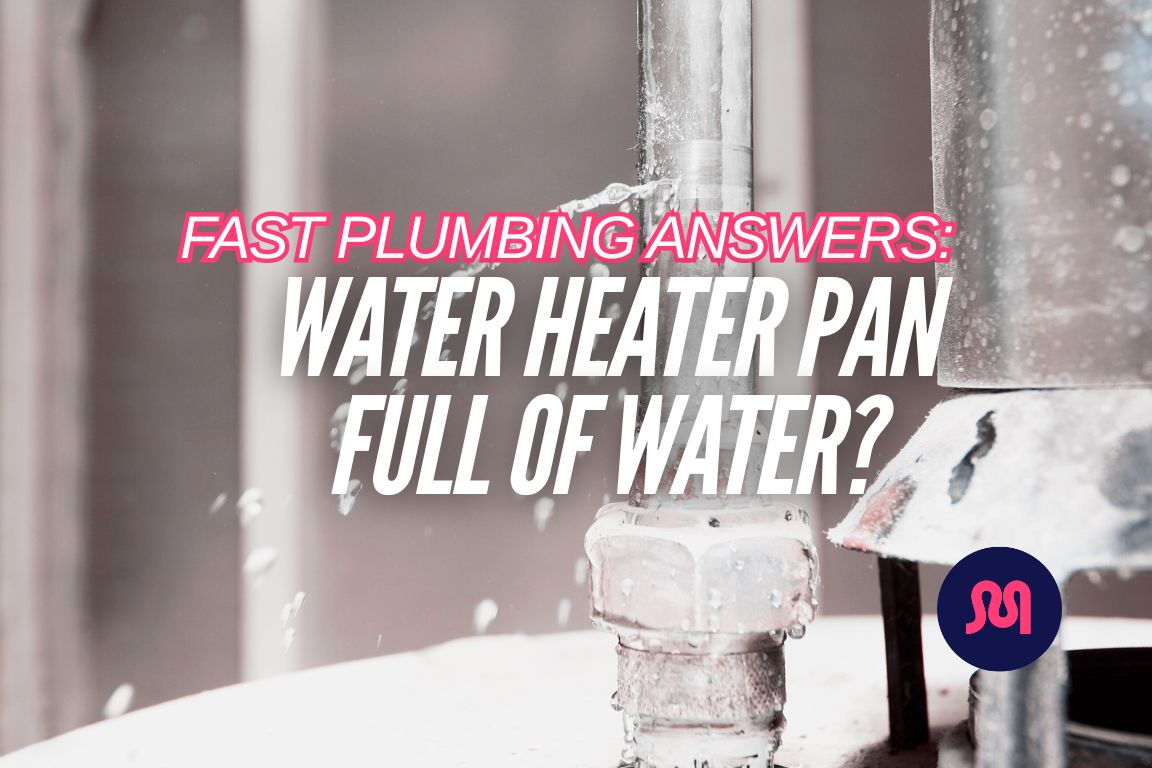The Best Way to Descale Your Tankless Water Heater

table of contents
table of contents
It’s time to descale your tankless water heater. You’re thinking about saving a few bucks with a DIY descaling kit instead of calling your plumber- but man, the job seems really annoying. So is it worth hiring a pro to descale your tankless, or can you DIY the job?
At Mother Modern Plumbing, we care about the best possible solution for your home plumbing needs. Our team of experts is deeply trained on the latest tech and scaling prevention tools for tankless water heaters- but we know DIY is a realistic option for many of you.
In this guide, we’ll explain the importance of descaling your tankless- especially in areas with hard water like Dallas. Then, we’ll guide you through how to DIY the descaling process, and all the associated costs. Compare this information to our maintenance options, and decide whether doing it yourself or hiring a plumber is right for you.
Need tankless descaling service in Dallas? We’re here 7 days a week- give us a call. Our friendly service team will send a licensed plumber on your schedule.
{{tankless-descale="/services/tankless-descale"}}
Mineral Scaling: Tankless Water Heaters’ Biggest Threat
Many homeowners think of hard water as a “conventional water heater tank” issue. This is because the effects of scale buildup are easy to see in conventional systems- tank corrosion and sediment buildup are extremely visible.
But mineral scaling doesn’t just vanish when you upgrade to an on-demand system. Tankless water heaters are still highly susceptible to scale buildup. Calcium and magnesium still clog internal components and lower your unit’s overall efficiency.
It doesn’t matter if your tankless unit is gas or electric- hard water creates the same problems. Hard minerals act as insulators- the heating coils and components in your system work harder to heat the water you need.
Our Master Plumber Dillon Ashton says, “Scale buildup in internal components is the #1 reason tankless water heaters don’t produce hot water.”
7 common problems caused by scale buildup in tankless systems
Here are seven common problems associated with increased scale in your tankless water heater:
- Increased utility bills: Scale accumulation forces your tankless unit to work harder to produce on-demand hot water- this leads to spikes in your gas or electric bill (whichever powers your system).
- Failed ignition: Proper water flow is crucial for proper ignition to occur. Scaling not only blocks your cold water intake filter, it can build up on the crucial spark electrodes in the ignition system.
- No hot water: Scale buildup on the heat exchanger causes multiple problems in hot water delivery. “Over time, minerals coat the inside of the heat exchanger,” Dillon says. “That prevents efficient heat transfer- your burner or heating element is working fine, but the water isn’t getting hot enough.”
- Low water pressure: Decreased flow in your hot water using appliances and fixtures (especially the shower) indicates scaling in the delivery line.
- Popping noises: Strange noises from your on-demand system indicates scale buildup.
- Temperature readings: Mineral scaling interferes with temperature readings from the heat exchange by your thermistors- the sensors that tell your tankless water heater’s control board how hot the water is.
- Frequent error codes: The added strain of scale in the system causes the unit to display error codes- and in severe cases, shut down completely.
How to DIY Tankless Water Heater Descaling
Let’s walk through the supplies, costs, and precise steps you’ll need to properly descale your tankless water heater on your own.
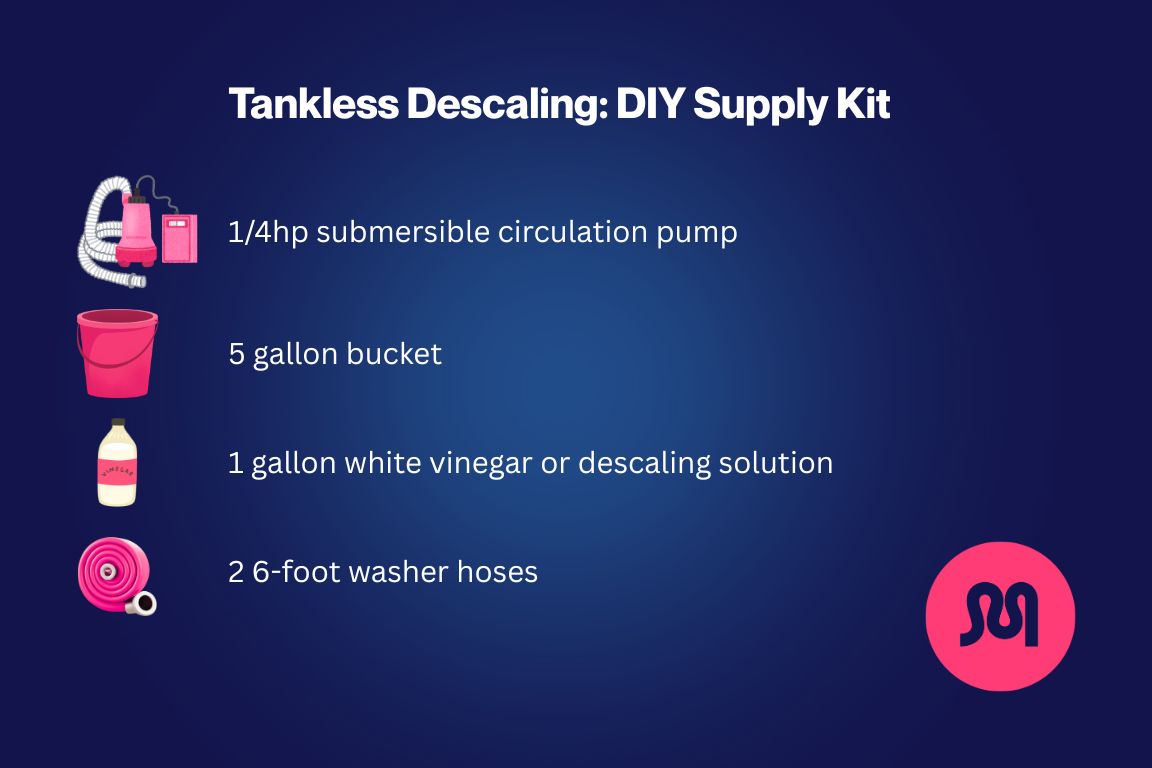
Tools and supplies
Tankless water heater descaling kits are videly available from Amazon, Home Depot and other retailers for $60-$80. Some homeowners opt to buy materials separately, because it can save money on descaling solution long-term.
Here’s what you’ll need to descale your own tankless water heater if you don’t buy a kit:
- 5 gallon bucket
- Several old towels or rags
- 2 6-foot washer hoses
- 1/4hp submersible circulation pump
- 1 gallon solution of white vinegar or descale solution*
*Our plumbers say you can get descale solution at Home Depot. Otherwise, use a 1:1 ratio of vinegar to water.
Look for a submersible pump with a ¼ horsepower (hp) motor. Some guides suggest 1/6hp is enough- if you’re springing for one, buy one powerful enough to do other jobs around the house- like draining your hot tub or pool, or removing standing water from a crawl space.
Cost of DIY tankless water heater descaling
Here’s what all the supplies you’ll need for DIY tankless descaling will cost:
- Bucket and rags: cheap to free (you or a neighbor should have these laying around)
- 2 6-foot washer hoses: $20
- 1/4hp submersible pump: $120-$160*
- 1 gallon of white vinegar: $5-$9 OR
- Tankless descaling solution: $20 per ¼ gallon
*We’ve seen 1/4hp submersible pumps as cheap as $59 online. There are far more reliable brands- like Wayne- that fall in the $150 range.
Total cost of DIY descaling supplies: $145-$189
These supplies, with the exception of the white vinegar, should be one-time purchases.
You don’t need a descaling kit! While plenty of kits are just fine, you can generally source the individual supplies you’ll need for less money.
DIY steps for descaling your tankless system
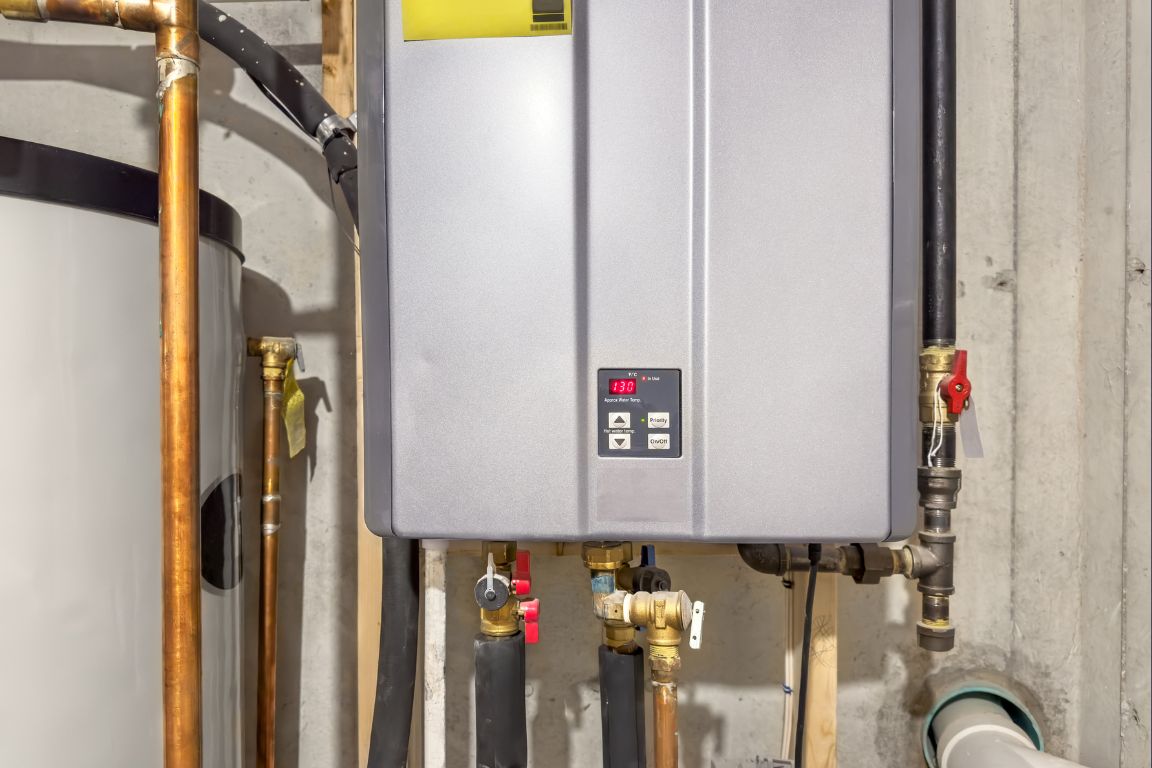
Follow these steps closely to properly descale your tankless. Improper flushing can void your product warranty, so use care!
Setup and safety
- Turn off the power. Make sure all incoming power is turned off to the water heater. Take the extra step of unplugging the tankless entirely for added safety.
- Turn off the gas (if necessary). If you have a natural gas system, turn off the gas supply. Make sure the valve is fully shut off before proceeding.
- Shut off your water valves. Locate your hot water and cold water isolation valves. Shut these off completely. Do this before locating your service valves.
- Locate your service valves. Leave these in the off position, and remove the caps.
Preparation
- Pour your descaling solution. Pour your white vinegar or descaling solution into your bucket. Do not add water- this will lower its effectiveness.
- Attach washer hose #1. Attach one hose end to the submersible pump. Attach the other end of the same hose to the cold water service valve on your water heater.
- Attach washer hose #2. Attach one end of the other hose to the hot water service valve, and place the other end inside your bucket.
- Place your submersible pump inside the bucket.
- Plug the pump into a grounded outlet. This step is crucial- a grounded outlet ensures your pump won’t be damaged, and it eliminates the risk of shock.
- Open the service valves on your tankless water heater.
Descaling
- Turn on the pump. The pump will circulate the solution or white vinegar from the bucket through the tankless unit.
- Run the pump for 45 minutes. This is the minimum length of time we suggest for descaling with this DIY process. In areas with extremely hard water, run the pump for up to 60 minutes (1 hour).
- Turn off the pump. Close the cold water service valve. Disconnect the hose from your cold water service valve. Discard the white vinegar or solution safely down a sink or floor drain.
System flush
- Flush your tankless system with clean water. Refill your bucket with clean water. Reconnect the hose to your cold water service valve. Open the cold water isolation valve, then let this process occur for 5 minutes.
- Monitor descaling discharge in your bucket. Any remaining white vinegar and mineral scale in your system should discharge into the bucket. You’ll likely need to empty the bucket several times during the clean water flush.
- Close the cold water and hot water service valves.
Reconnection and testing
- Reconnect your tankless water heater system. Disconnect the cold service hose first and secure the cap. Then, disconnect the hot water service hose and secure the cap. After this, open the isolation valves again.
- Turn on the gas supply. Do this before restoring power to the system.
- Turn power back on and restore power to the tankless. Plug in your system, then either restore power or flip the circuit breaker back on.
- Test your hot water supply. Select a tap and turn on the hot water faucet. You should only receive clean water, and there should be no air or interruptions in water delivery.
Yes, that’s a lot of steps. But if you’re planning to DIY the descaling process, we want you to be as safe, secure and prepared as possible.
3 risks associated with DIY tankless descaling
Be absolutely sure you know what you’re doing before deciding to descale your own tankless water heater! Improper descaling maintenance can lead to 3 pretty unpleasant scenarios:
- Internal damage: Component damage is common, especially when DIYers use chemical solutions found in descaling kits. Improper mixing of these chemicals corrodes and damages key parts, especially the heat exchange and spark electrodes in the igniter.
- Dirty water: Many homeowners don’t fully flush their tankless after descaling. This leads to chunks of dislodged scale passing into their water, or water that tastes like vinegar for a short period.
- Voided warranty: System damage caused by DIY maintenance voids the warranty on your tankless water heater. If you aren’t sure what you’re doing, you won’t just have scale damage- you’ll have a broken unit your manufacturer won’t cover.
Well-respected tankless manufacturer Navien strongly “recommends hiring a professional” for descaling due to the risk of voiding your warranty.
The Better Choice: Hiring a Plumber for Tankless Descaling
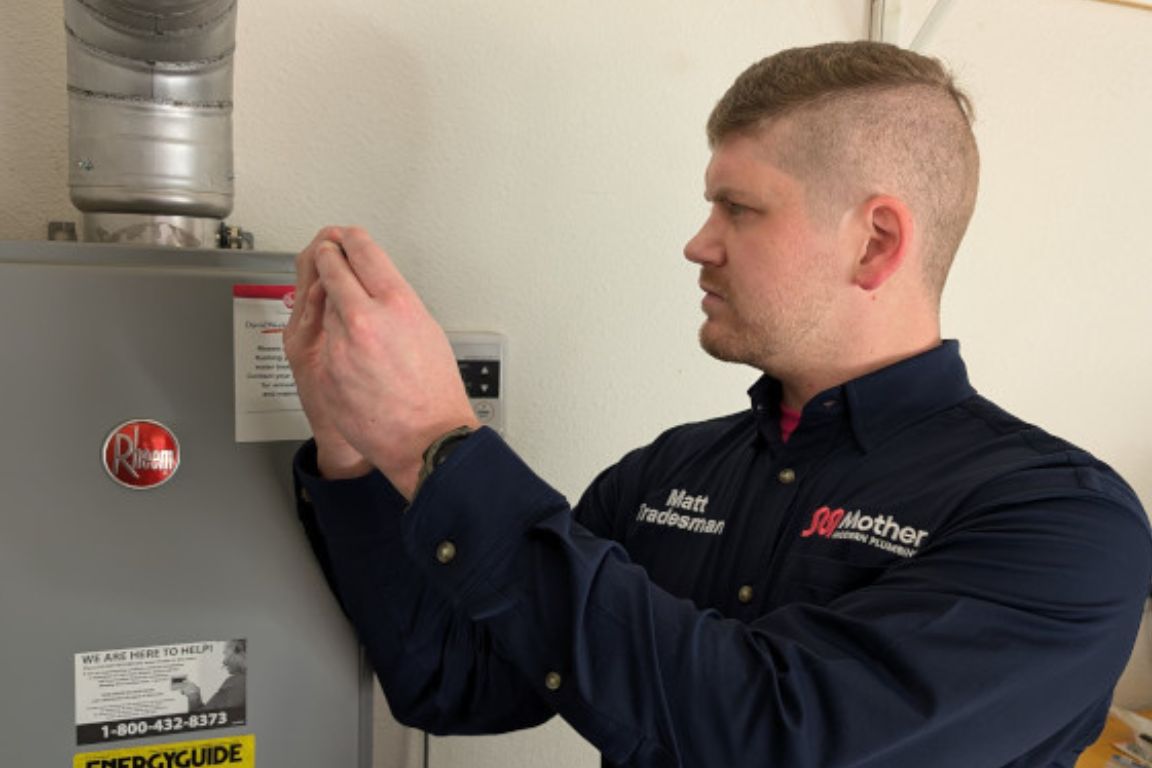
There are plenty of reasons to consider hiring a plumber to descale your on-demand water heater. Here are three that we hear frequently from our customers:
- “I work and I have kids. Let someone else do it.”
- “I’m not handy like that- DIY is more stressful than fun for me.”
- “I don’t feel comfortable- I’m scared of voiding my warranty.”
Many descaling guides focus solely on cost, but it’s important to recognize these real-world reasons for calling a plumber. If you’re not a handyman or DIY fanatic, or you work 60 hours a week and raise 2 kids, it’s normal to hand the job off to a plumber you trust.
Cost of tankless water heater descaling maintenance
Nationwide, the average cost of tankless water heater descaling maintenance is $450-$600 per service call.
To many, this number appears high in contrast to DIY and handyman quotes. However, it’s important to consider what’s included in modern descaling appointments.
Ask your plumbing company how they plan to go above and beyond to earn your business. For example: Mother Modern Plumbing includes a complete safety inspection of your on-demand water heater with every descale.
Here’s how often to schedule descaling service where you live
Our Master Plumbers recommend every tankless water heater owner descales their system at least once a year. Increase the frequency of this maintenance task if you experience hard water, especially you live in an area with high water pressure.
Here are our general recommendations for scheduling tankless descale service:
- In most locations: If you don’t have extremely hard water, it’s still important to have your tankless system descaled once per year to prevent accumulation.
- In hard water regions: Schedule descaling service once every 8-9 months.
- In densely populated hard water regions: The combination of hard minerals and high water pressure is problematic. Descale your system every 6-8 months.
Soft water = less scaling: Consider installing a home water softening system if scaling issues affect multiple appliances. You’ll save money and improve efficiency across the board.
Comparison Chart: DIY vs. Plumber, Tankless Descaling
Here’s a handy chart to compare the pros and cons of descaling your own tankless water heater vs. hiring a licensed plumber:
*The cost of DIY descaling supplies is predominantly a one-time expense. The only recurring expense you’ll usually have is white vinegar- about $20 per descale.
Need Tankless Descaling in Dallas? Call Mother
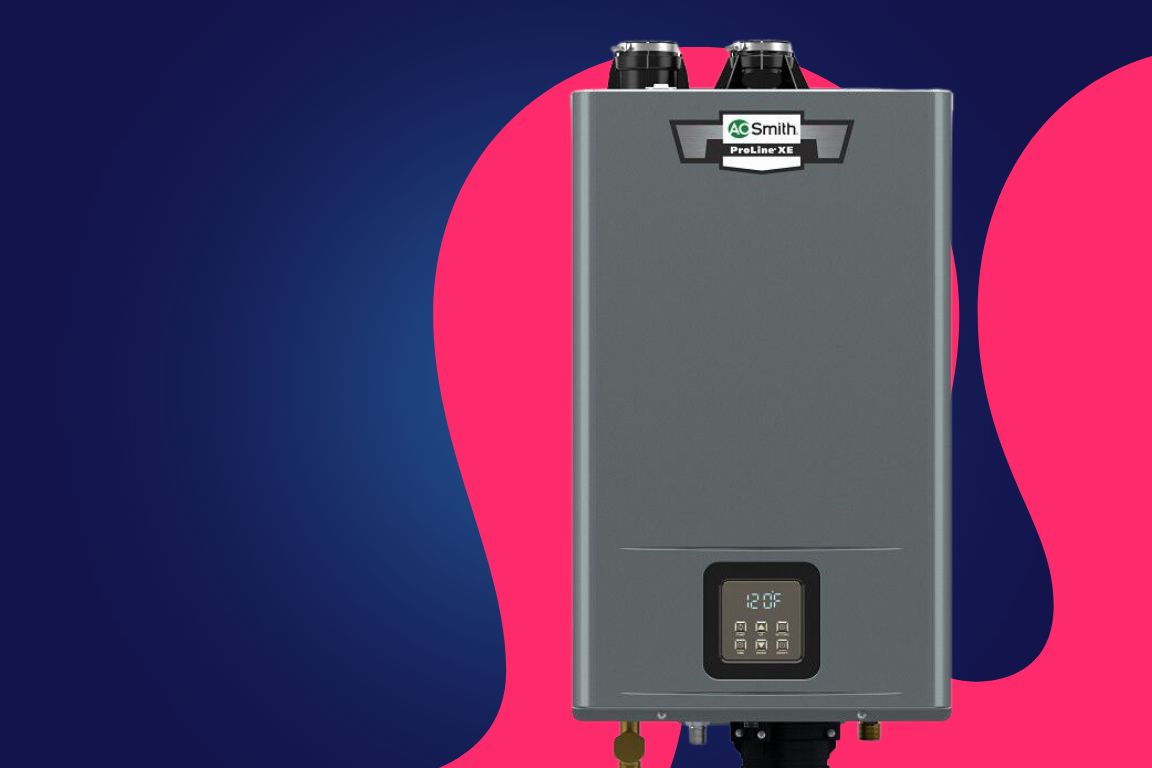
The choice between descaling your own tankless water heater and hiring a plumber comes down to 2 basic questions:
- Are you confident and handy with household jobs that require some plumbing, gas and electrical knowledge?
- Is the extra cost of hiring a plumber worth the added peace of mind, time savings, and guarantee your product warranty is safe?
Dallas homeowners who opt to hire plumbers for tankless descaling service trust Mother Modern Plumbing. Our team cares deeply about proactive maintenance solutions for today’s smartest home plumbing solutions- like keeping tankless units clear of mineral scaling.
Need tankless descaling service in Dallas? Call Mother 7 days a week- our friendly service team will have a licensed plumber to you on your schedule.
{{tankless-descale="/services/tankless-descale"}}
Common Q’s about Water Heaters
How often should I descale my tankless water heater?
Perform tankless water heater descaling once every 6-12 months in most areas to eliminate mineral buildup in the system.
If you live in areas with extremely hard water- such as Dallas-Fort Worth- consider decaling your on-demand hot water heater every 6-8 months (roughly twice a year). Limescale is particularly hard on tankless units in our area.
How often should I replace the inlet filter on a tankless water heater?
This depends on the water quality in your area and your personal water usage rate. Most homeowners should replace the inlet filter every 6 months.
If your home uses a lot of water, or if you live in regions with extremely hard water (like North Texas), check your inlet filter every 4 months. Increased use and excessive mineral scaling have significant impact on the filter's lifespan.
What are the most common tankless water heater repair types?
A majority of tankless water heater repairs (especially in DFW) involve one of these six key issues:
- Descaling due to mineral buildup
- Ignition system issues (blocked sensors)
- Blockages of vents
- Faulty flow sensors
- Leaks from a damaged heat exchanger or valves
- Damaged gas flexes and closed valves (gas units)
Can I get a tax credit for a tankless water heater?
Yes, natural gas tankless water heaters installed between 2023 and 2032 are eligible for the EnergyStar Energy Efficient Home Improvement Tax Credit. It covers 30% of the total installation cost up to $600. ENERGY STAR rated tankless water heater models with ≥ 0.95 UEF are eligible.



